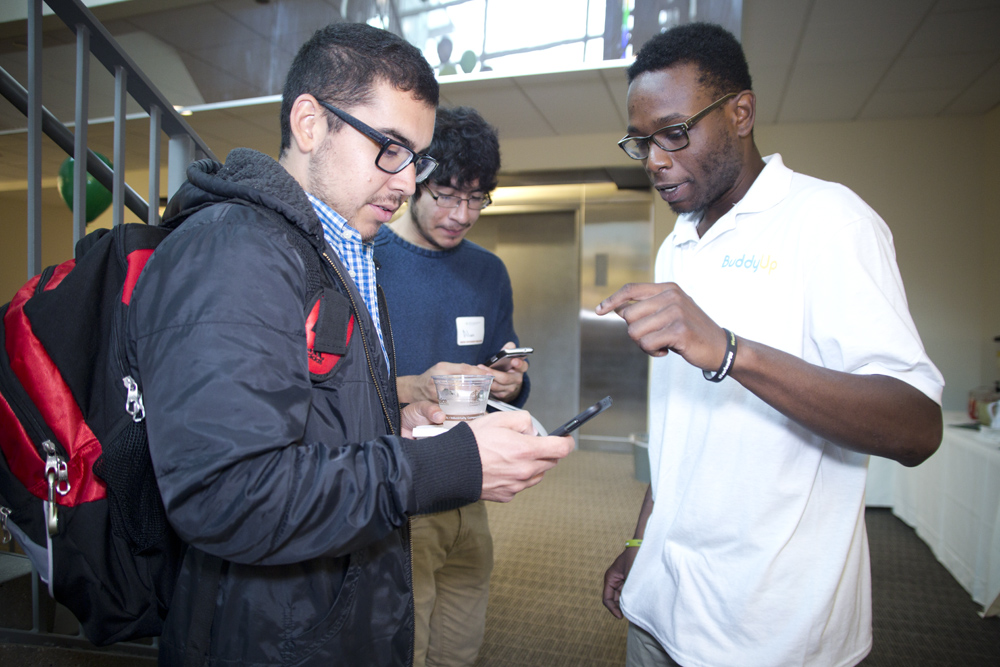Portland State welcomed Lois Lindsay Davis as the new chief of staff at the president’s office on Aug. 2. Davis joined the Office of the President after serving Oregon Health and Science University for over 23 years.
Hail to the chief
Portland State welcomed Lois Lindsay Davis as the new chief of staff at the president’s office on Aug. 2. Davis joined the Office of the President after serving Oregon Health and Science University for over 23 years.
Davis takes on the new position with nearly 30 years of experience in public affairs, press and government relations at both OHSU and in Washington, D.C., for then-U.S. Rep. Ron Wyden.
Davis’ position as chief of staff essentially replaces the special assistant to the president position, formerly held by Roderic Dimand, who is retiring. The new position also takes on some additional responsibilities ranging from government relations to student advising and cooperation.
The job
The new post has three main functions, Davis explained, including project initiatives, stakeholder consulting and prioritizing for President Wim Wiewel.
1. Project initiatives
“First, [my job is] to make sure the multiplicity of projects the president has initiated are actually getting done,” Davis said.
The projects, she said, range from P-20—the education program focused on student success from pre-kindergarten to postgraduate education—to increasing Portland State’s presence in the Middle East.
The list is long, Davis said, and she will gauge her success by the progress of these projects.
“I will feel I have done my job if the president’s priorities for projects, such as P-20 and sustainability partnerships … advance by the end of the year,” she said.
2. Stakeholder consulting
Davis said the second aspect of her job is contacting the organizations or individuals involved in the projects and discussing the different aspects of the initiatives.
She explained that the various projects have both internal and external stakeholders—or members of both the Portland State community and the community at large—deeply involved or affected.
In the case of P-20, this includes students, teachers, parents and community members, as well as advisors and outreach leaders within Portland State.
In other circumstances, she said, it is “making sure that if there are people [Wiewel] hasn’t had the opportunity to meet yet in the community, that he gets to do that.”
3. Prioritizing for the president
Her third focus as chief of staff, Davis said, is helping President Wiewel prioritize his time.
“It’s to make sure the president’s time is being used strategically,” she said.
President Wiewel, as both a relatively new president and the leader of Oregon’s largest public university, is in high demand at community meetings, events and discussions.
Davis enters the equation by providing Wiewel information to help best prioritize each of these demands.
“I’m making sure day-to-day activities of the president are taken care of so he can focus on leading the university,” Davis said.
She reports directly to President Wiewel.
“I’m a second pair of eyes and ears, in a sense,” she said.
Davis also helps lighten the load for Wiewel by working with college deans, leaders and students. She has recently worked with Christopher Proudfoot, legislative affairs director for ASPSU.
On the economy
In light of the current economic situation, she remains confident but pragmatic.
“Clearly, if you look at public higher education in Oregon and nationwide, it’s sort of shocking how much less public funding goes into higher education than in the past,” she said. “The legislature, higher education system and the public really need to engage in a vigorous discussion over the future of public higher education.”
Davis identified key questions the stakeholders need to ask, highlighting the search for new financial resources and balancing funds and quality in the classroom.
“There aren’t clear answers, but it’s clear that we need to find answers,” she said.
Some projects in the works—which Davis hopes will both advance the university’s goals while using funds prudently—include increased partnerships with OHSU and working with the state.
This incorporates housing projects, a recently approved life sciences research facility to be shared by OHSU and Portland State and the possibility of a 501(c)(3) shared research institute between the two schools.
A fresh pair of eyes
Davis, brand new to the Portland State community, shared her insights about her new home.
“What has struck me about PSU is how optimistic everyone is,” she said. “There is really a sense of hope, a really can-do sort of spirit, very friendly and very collaborative.”
She related to her experience at OHSU, watching it transition from a state agency to a public corporation, which she said created a good foundation for change.
“In 1995, OHSU was poised to take an exponential leap forward. Now PSU is poised for that,” Davis said. “It’s an extremely exciting time for the institution and to be at the institution.”
Davis said she immediately felt at home at Portland State, and sits in awe of the generation she serves at the university.
“I really admire how your generation is much more global in your experience,” she said.
Davis’ immediate impression from the community, she said, is that Portland State is on the rise. It’s going places and it’s very ambitious.





